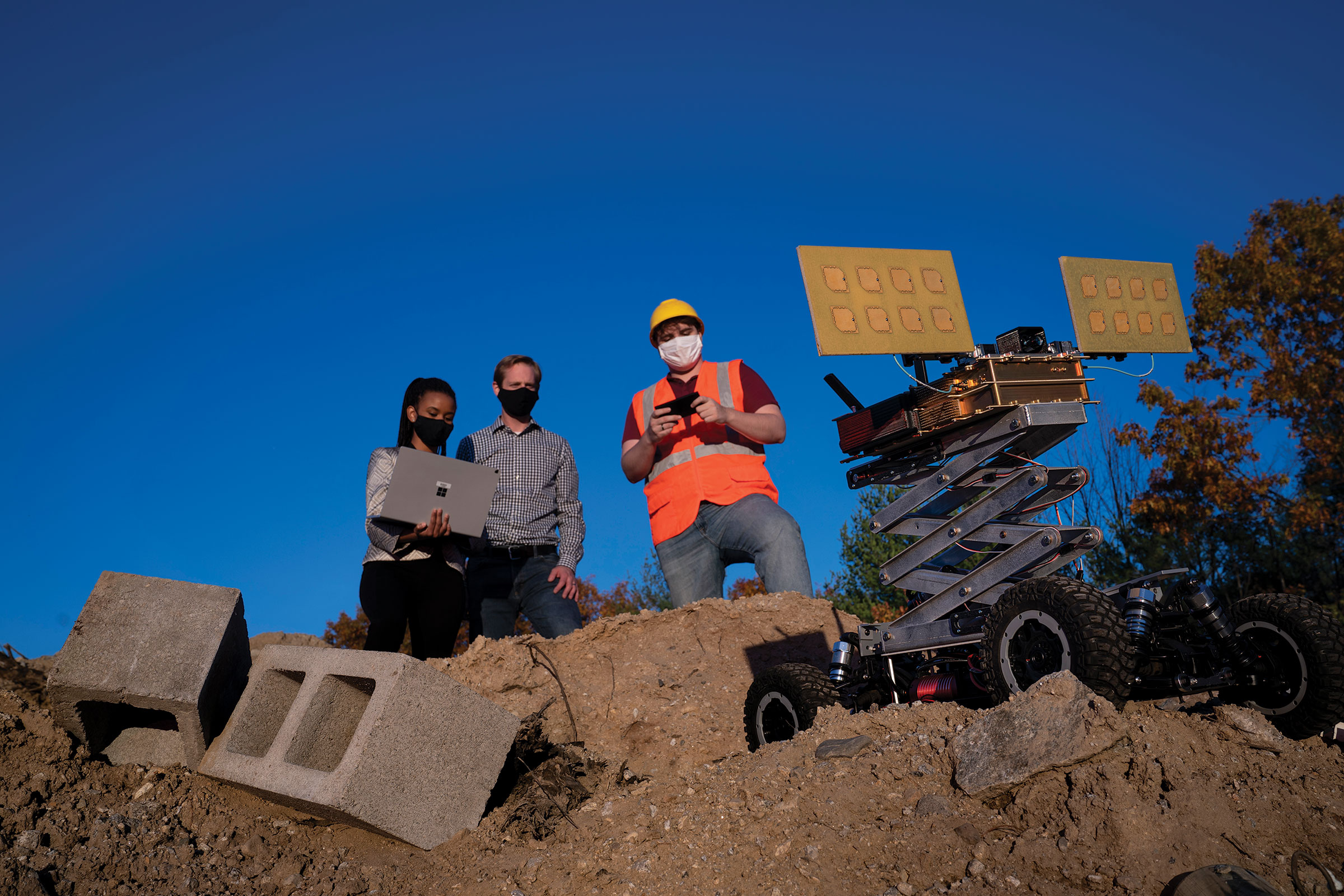Motion Under Rubble Measured Using Radar (MURMUR)

MURMUR is a portable life-detection sensor designed to rapidly locate survivors in complex post-disaster conditions of rubble and degraded infrastructure. Mounted on a robotic vehicle, this remote-controlled system uses radar to peer through rubble and debris to detect the motion of a human breathing. By guiding rescue teams, MURMUR reduces risks to first responders and search animals during dangerous search efforts and enables a timely recovery of survivors.

Improving Search and Rescue
Search-and-rescue teams use various aids for locating people trapped beneath rubble. Trained rescue dogs that scent humans and radio-frequency (RF) systems that sense motion are the two most commonly employed methods. However, dogs cannot tell how many victims are in a location or if they are alive. Many RF systems are too large to carry into tight, debris-strewn areas; have limited detection range; or sense only the presence not the condition of survivors.
MURMUR provides rescue teams with a tool that allows them to more safely and rapidly locate victims whose survival depends on timely discovery. It operates using a radar that determines the range to a target and transmits continuously. MURMUR's homodyne receiver digitizes the radar signals for processing with both classical signal processing techniques and the Laboratory's novel machine learning algorithms. The received signals are downconverted from RF to much lower frequencies that allow MURMUR to detect the signals reflected from a person through a variety of materials, including concrete, drywall, wood, and even rebar.
MURMUR filters the radar signals to retain only data at frequencies indicative of the cyclical motion of humans' breathing and other typical human motions, such as waving. This filtering process removes most of the data that come from stationary objects in the scene, such as rubble and debris. Using techniques to measure a target's relative motion, MURMUR can determine the rate at which the buried person is breathing and whether their breathing is shallow or strong. Search teams could use this information to triage which persons are most in need of immediate rescue and care.
Benefits
- Real-time detections at standoff distances up to 10 meters allow rescuers to quickly investigate unstable structures from a safe distance
- Operation at low frequencies enables the sensor to penetrate a variety of materials to a depth of up to 30 meters
- Accurate detection of the presence and breathing rate of up to four survivors lets responders prioritize rescue efforts
- Radar data presented in an intuitive graphical user interface can be wirelessly transmitted to multiple devices (Android, iOS, web browser)